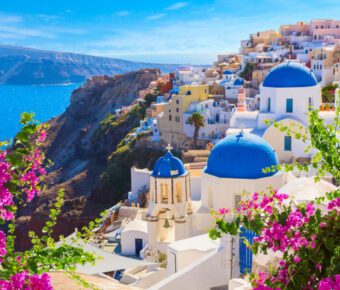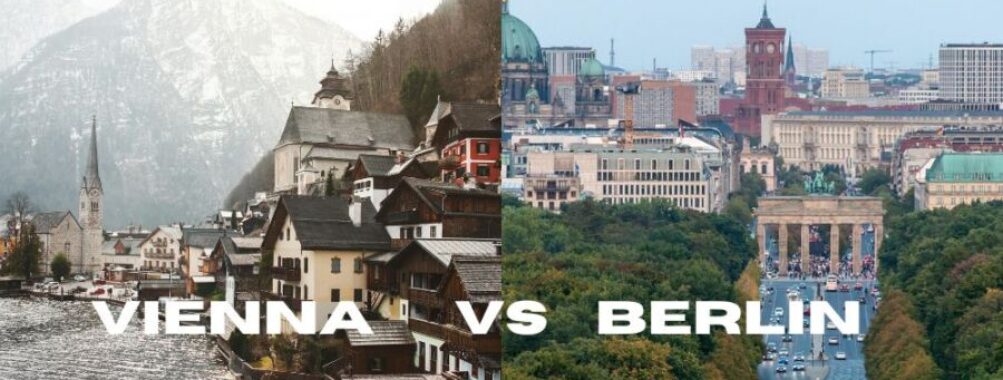
Vienna vs Berlin: 5 Key Differences to Shape Your European Adventure
Vienna and Berlin are two of Europe’s most popular cities for travelers. Both offer rich history, amazing culture, and unforgettable experiences. But which one should you pick for your next trip?
Berlin wins out for sheer variety of things to do and see. The German capital has more museums, attractions, and nightlife options than Vienna. It’s also cheaper and has a more youthful, creative vibe. Berlin is great for longer stays of up to a week.
Vienna shines when it comes to classical music, coffee houses, and imperial grandeur. The Austrian city feels more elegant and refined. It’s perfect for a long weekend of 2-3 days filled with concerts, palaces, and strudel. In the end, your choice depends on what kind of European adventure you’re after.
Table of Contents
- History and Heritage
- Historical Significance of Vienna and Berlin
- The Berlin Wall and Cold War Legacy
- Habsburg Monarchy and Viennese Traditions
- Cultural Comparison
- Art and Museum Scenes
- Music and Opera Influence
- Cuisine and Culinary Delights
- Architectural Contrast
- Viennese Classical Architecture
- Berlin’s Eclectic Structures
- Iconic Monuments and Landmarks
- Urban Lifestyle and Living Conditions
- Cost of Living and Accommodation
- Public Transportation Networks
- Nightlife and Entertainment
- Leisure and Recreation
- Parks and Green Spaces
- Shopping and Markets
- Festivals and Seasonal Events
- Travel and Accessibility
- Airports and International Reach
- Vacation Rentals and Short Stays
- Tourism Impact on Cities
- Frequently Asked Questions
- How does the cost of living in Vienna compare to Berlin?
- What are the key differences in lifestyle between living in Vienna and Berlin?
- Which city has a more vibrant cultural scene, Vienna or Berlin?
- In terms of safety and quality of life, how do Berlin and Vienna differ?
- Can you describe the differences in the Christmas markets of Vienna and Berlin?
- What should one consider when deciding between visiting Vienna or Berlin?
- Book Your Dream Experience
- More Travel Guides
History and Heritage
Vienna and Berlin are cities steeped in rich history and cultural heritage. Both have played pivotal roles in shaping European history, leaving behind fascinating legacies for visitors to explore today.
Historical Significance of Vienna and Berlin

Vienna boasts a long and illustrious past as the capital of the Habsburg Empire. The city’s grand palaces and buildings tell the story of its imperial glory days. Schönbrunn Palace, a UNESCO World Heritage site, stands as a testament to the opulence of the Habsburg monarchy. This massive 1,441-room palace was the summer home of the imperial family.
The Hofburg, another architectural gem, served as the Habsburg’s winter residence. Today, it houses the Austrian president’s offices and several museums. These palaces offer visitors a glimpse into the lavish lifestyle of Austria’s former rulers.
Berlin’s history is equally compelling, but more recent and turbulent. The city was at the center of major 20th-century events, including World War II and the Cold War. Its landmarks and museums provide a stark reminder of these troubled times.
The Berlin Wall and Cold War Legacy

The Berlin Wall, built in 1961, divided the city for 28 years. It became a symbol of the Cold War and the Iron Curtain that separated East and West. Today, remnants of the wall serve as powerful memorials to this dark chapter in history.
Checkpoint Charlie, once the main crossing point between East and West Berlin, is now a popular tourist spot. It offers a glimpse into the tense atmosphere of the Cold War era.
The East Side Gallery, a 1.3-kilometer-long section of the Berlin Wall, is now an open-air art gallery. It features murals by artists from around the world, celebrating freedom and unity.
Habsburg Monarchy and Viennese Traditions
Vienna’s imperial past has left a lasting mark on the city’s culture and traditions. The Habsburg legacy is visible in the city’s architecture, music, and art scene.
The Spanish Riding School, dating back to the 16th century, continues the tradition of classical dressage. Visitors can watch the famous Lipizzaner horses perform intricate moves in the baroque Winter Riding School.
Vienna’s coffeehouse culture, recognized by UNESCO as intangible cultural heritage, is another enduring Habsburg tradition. These elegant cafes have been centers of intellectual and artistic life for centuries.
Austrian art flourished under Habsburg patronage. The Belvedere Museum houses an impressive collection of Austrian art, including Gustav Klimt’s famous “The Kiss.
Cultural Comparison
Vienna and Berlin both offer rich cultural experiences, but with distinct flavors. These two cities showcase unique art scenes, musical traditions, and culinary delights that reflect their histories and identities.
Art and Museum Scenes
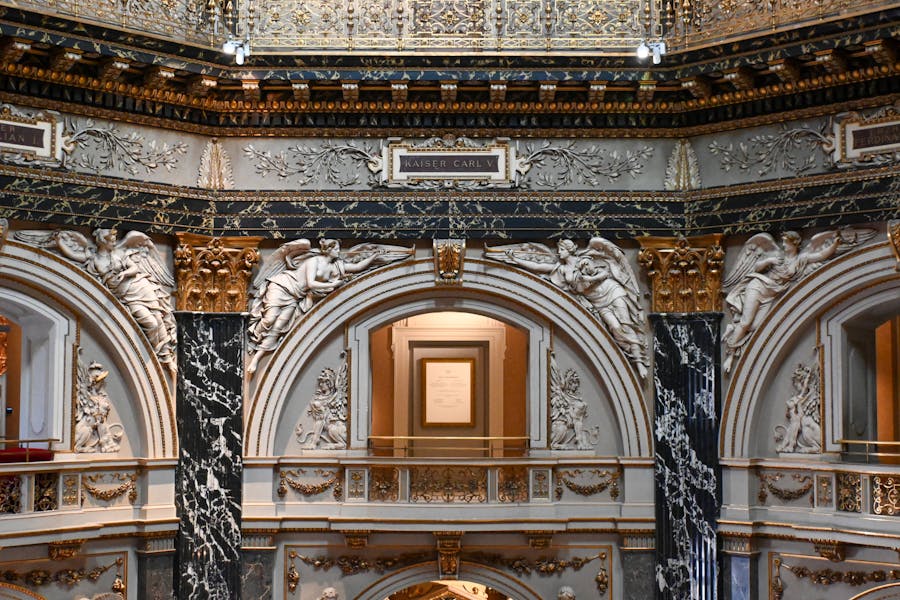
Vienna’s art scene is steeped in classical elegance. The Kunsthistorisches Museum houses an impressive collection of Old Masters. You’ll find works by Bruegel, Vermeer, and Raphael here. The city also embraces modern art at the MuseumsQuartier, a sprawling complex of exhibition spaces.
Berlin’s art world is edgier and more contemporary. Street art and graffiti color many neighborhoods. The East Side Gallery, a section of the Berlin Wall covered in murals, is a must-see. For traditional art, the Pergamon Museum on Museum Island showcases ancient treasures.
Both cities have free museum nights and passes for tourists. Vienna tends to focus more on fine arts, while Berlin caters to avant-garde tastes.
Music and Opera Influence

Vienna is synonymous with classical music. It’s the city of Mozart, Beethoven, and Strauss. The Vienna State Opera puts on world-class performances nearly every night. During summer, outdoor concerts in parks and palaces are popular.
Berlin’s music scene is diverse. It’s famous for techno clubs and electronic music. But you can also enjoy classical concerts at the Berlin Philharmonic. The city hosts many music festivals throughout the year, from jazz to rock.
Opera lovers will find great shows in both cities. Vienna’s productions tend to be more traditional, while Berlin often stages experimental interpretations.
Cuisine and Culinary Delights
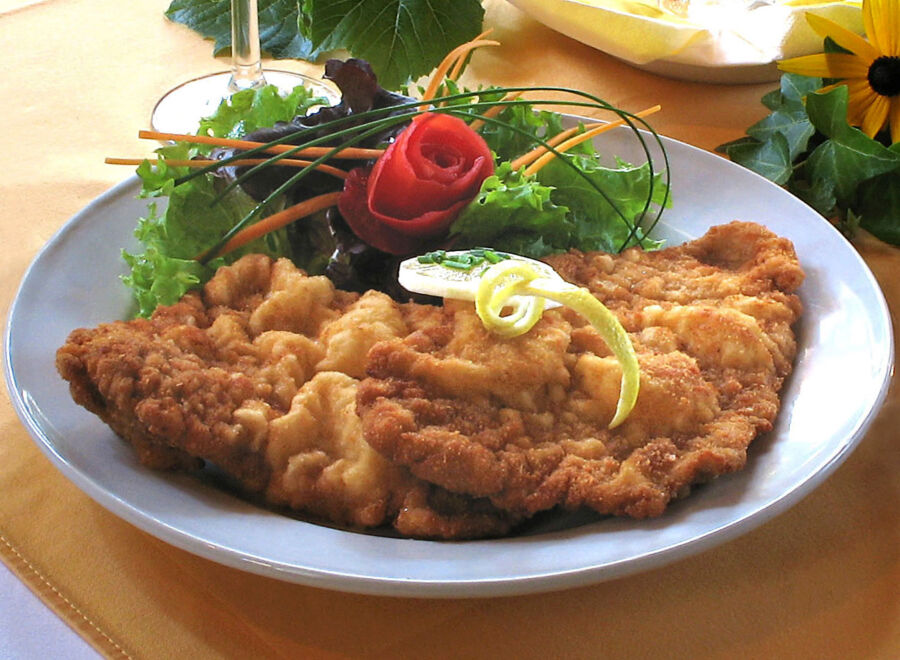
Vienna’s food scene is a mix of tradition and innovation. Wiener Schnitzel is a must-try dish. Cafes serve delicious pastries like Sachertorte. The Naschmarkt is great for sampling international flavors.
Berlin’s culinary landscape is more eclectic. Currywurst is a popular street food. The city is known for its diverse immigrant cuisines, especially Turkish and Vietnamese. Food markets like Markthalle Neun offer a range of local and international treats.
Both cities have thriving restaurant scenes. Vienna leans towards elegant dining, while Berlin embraces casual and trendy eateries. Vegetarian and vegan options are more prevalent in Berlin.
Architectural Contrast
Vienna and Berlin showcase starkly different architectural styles that reflect their unique histories and cultural identities. From grand imperial palaces to edgy modern designs, these cities offer a visual feast for architecture buffs and casual tourists alike.
Viennese Classical Architecture
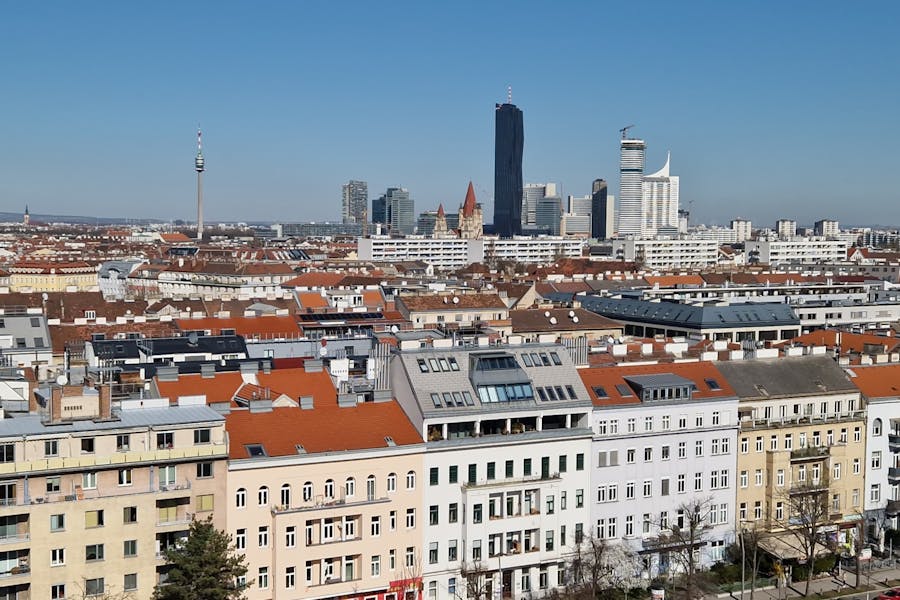
Vienna’s skyline is dominated by elegant Baroque and Neoclassical buildings. The city’s imperial past shines through in its grand palaces and ornate facades. Schönbrunn Palace stands out as a prime example of Baroque splendor. Its yellow exterior and meticulously manicured gardens transport visitors to the days of the Habsburg Empire.
The Hofburg Palace complex, once the seat of imperial power, now houses museums and government offices. Its mix of architectural styles, from Gothic to Art Nouveau, tells the story of Vienna’s evolution over centuries.
Belvedere Palace, with its stunning gardens and art collections, showcases the city’s love for symmetry and grandeur. These palaces aren’t just pretty faces – they’re living museums that give a glimpse into Vienna’s rich history.
Berlin’s Eclectic Structures
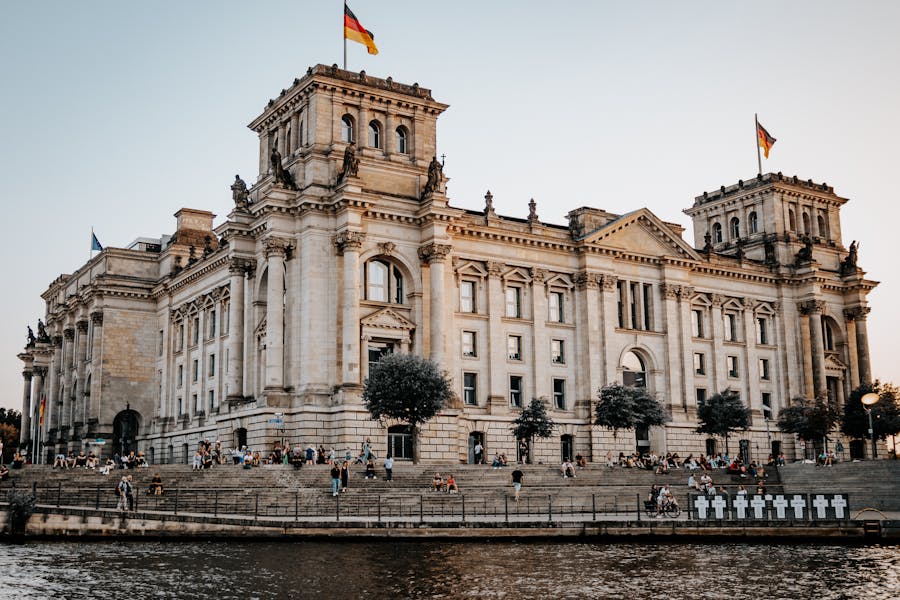
Berlin’s architecture is like a patchwork quilt of different eras and styles. The city has been through so much change, and it shows in its buildings. You’ll find a mix of pre-war classics, Soviet-era blocks, and cutting-edge modern designs all jumbled together.
The Reichstag building is a perfect example of Berlin’s architectural mash-up. Its old-school facade now sports a futuristic glass dome, symbolizing Germany’s journey from empire to modern democracy.
For a taste of Berlin’s edgier side, head to the East Side Gallery. This stretch of the Berlin Wall has been transformed into the world’s largest open-air gallery. It’s a colorful reminder of the city’s divided past and creative present.
Iconic Monuments and Landmarks
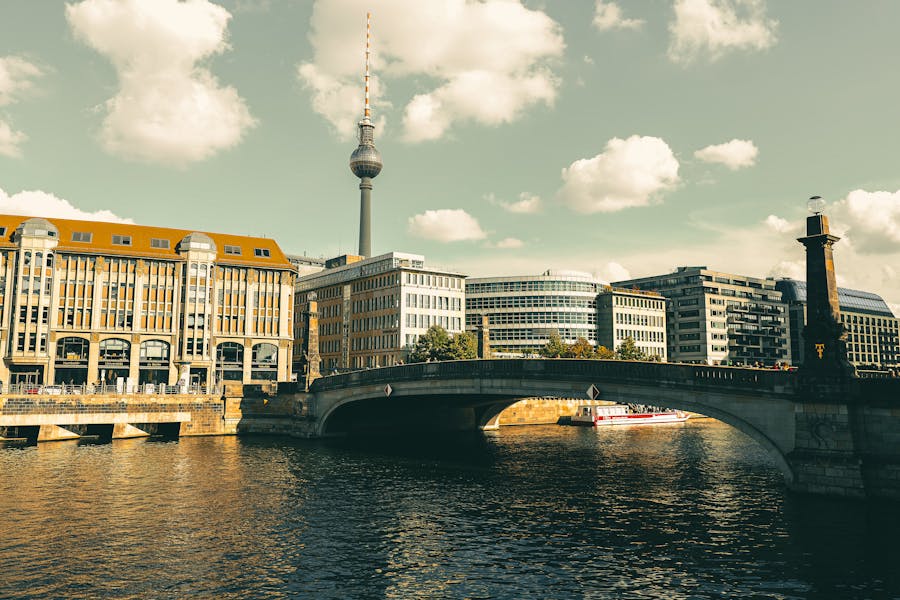
Both cities boast iconic landmarks that have become symbols of their identity. In Berlin, the Brandenburg Gate stands tall as a symbol of German unity. Once a symbol of division, it now welcomes visitors to the heart of the reunified city.
The TV Tower at Alexanderplatz, built in the 1960s, offers panoramic views of Berlin. It’s a stark contrast to Vienna’s St. Stephen’s Cathedral, with its Gothic spires piercing the sky.
Museum Island in Berlin is a UNESCO World Heritage site, home to five world-class museums. It’s a cultural powerhouse that rivals Vienna’s MuseumsQuartier. In Vienna, the giant Ferris wheel in the Prater park is a beloved landmark that’s been spinning since 1897.
Urban Lifestyle and Living Conditions
Vienna and Berlin offer unique urban experiences with distinct flavors. Both cities boast rich cultures, vibrant atmospheres, and diverse populations that shape daily life for residents and visitors alike.
Cost of Living and Accommodation
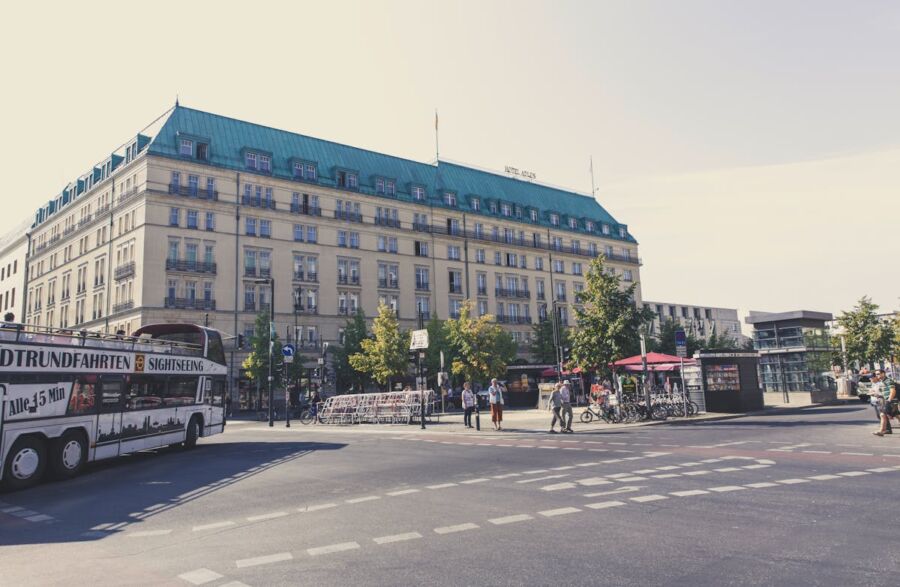
Rent in Berlin tends to be a bit cheaper than in Vienna. A one-bedroom apartment in Berlin’s city center costs around €900-1000 per month, while a similar place in Vienna might set you back €1000-1100. Food prices are pretty close, but eating out in Vienna can be pricier.
Berlin’s got a reputation for being a bargain hunter’s paradise. You can find great deals on clothes, furniture, and entertainment. Vienna’s not far behind, but it’s got a slightly higher VAT rate of 20% compared to Berlin’s 19%.
Both cities offer a mix of modern and historic housing options. Berlin’s got more spacious flats, while Vienna’s known for its charming old-world apartments with high ceilings.
Public Transportation Networks
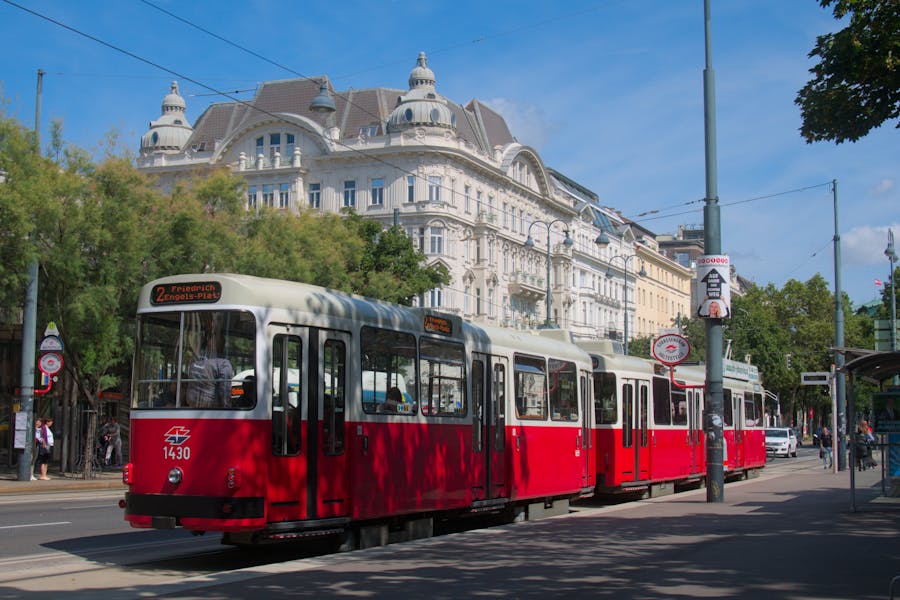
Vienna’s public transport system is top-notch. The city’s network of buses, trams, and metro lines is efficient and covers pretty much every corner. A yearly pass costs about €365 – that’s just €1 per day!
Berlin’s system is also great, but it can be a bit more confusing for newcomers. The city’s bigger, so getting around takes longer. But Berlin’s got a cool bike-sharing system that’s perfect for exploring on two wheels.
Both cities have reliable night buses, so you won’t get stranded after a late night out. Vienna’s system feels a bit safer and cleaner, but Berlin’s got more character.
Nightlife and Entertainment
Berlin’s nightlife is legendary. The city never sleeps, with clubs like Berghain that stay open all weekend. There’s something for everyone, from techno temples to cozy bars and everything in between.
Vienna’s got a more laid-back vibe. You’ll find elegant wine bars, cool jazz clubs, and fancy balls. The city’s coffee house culture is a big deal – it’s the perfect place to while away an afternoon.
Both cities have thriving arts scenes. Berlin’s got edgy galleries and street art, while Vienna’s home to world-class museums and concert halls. You’ll never run out of things to do in either place!
Leisure and Recreation
Vienna and Berlin offer diverse options for leisure and fun. Both cities boast green spaces, shopping districts, and exciting events year-round.
Parks and Green Spaces
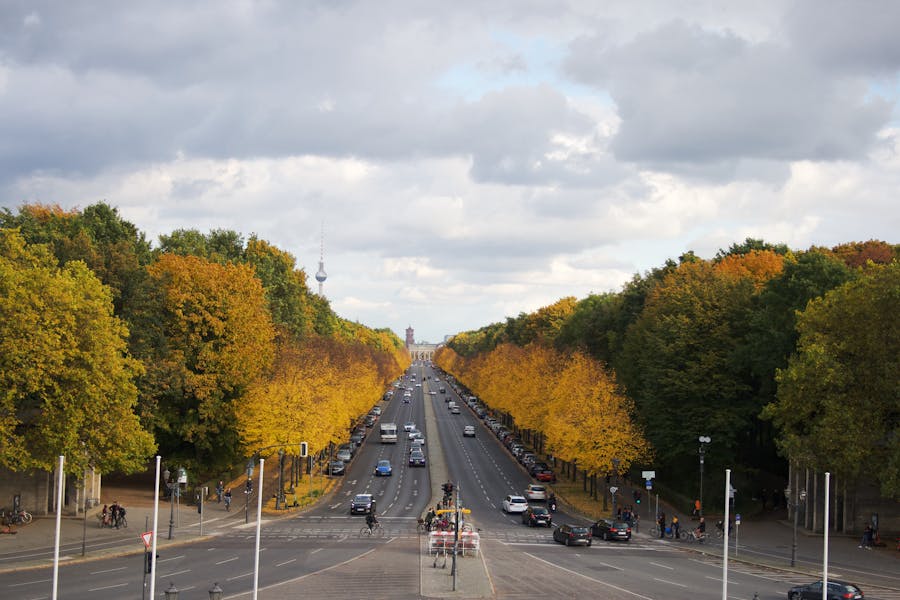
Vienna’s parks are a sight to behold. The Schönbrunn Palace gardens are stunning, with manicured lawns and fountains. Visitors can stroll through the Volksgarten, famous for its rose gardens.
Berlin has its own green gems. The sprawling Tiergarten is perfect for picnics and bike rides. Tempelhof Field, a former airport turned park, is unique. People fly kites and rollerblade on the old runways.
Both cities have parks where locals and tourists alike relax and enjoy nature. These green spaces offer a break from busy city life.
Shopping and Markets

Vienna’s shopping scene is a mix of high-end and quirky. The Naschmarkt is a must-visit for foodies. It’s packed with stalls selling fresh produce and local delicacies.
Berlin’s shopping is edgy and diverse. Kurfürstendamm is the main shopping street. It’s lined with designer stores and cafes. For unique finds, flea markets like Mauerpark are the place to go.
Both cities cater to shoppers of all tastes. From luxury brands to vintage treasures, there’s something for everyone.
Festivals and Seasonal Events
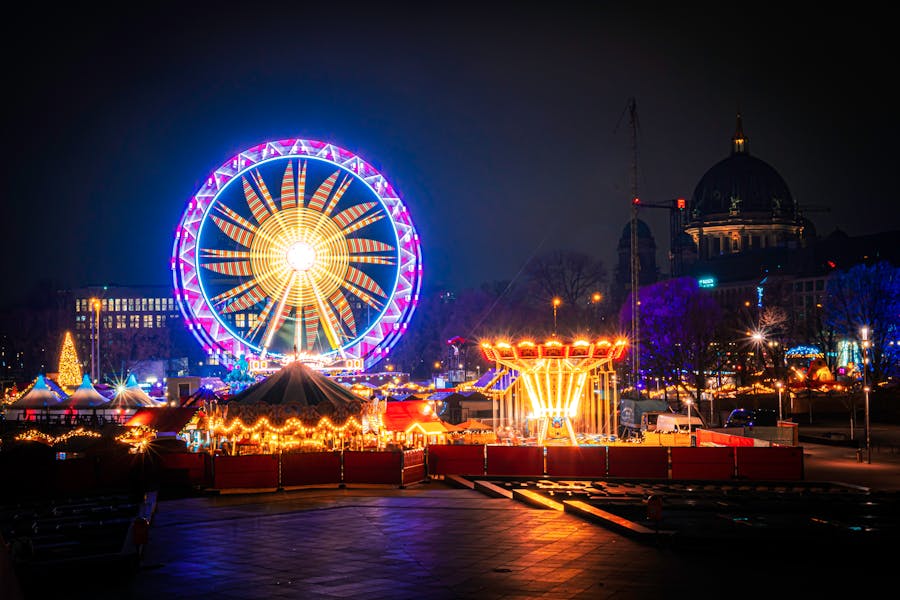
Vienna shines during Christmas. Its Christmas markets are magical, with twinkling lights and the smell of mulled wine. The Vienna Film Festival in summer draws movie buffs from around the world.
Berlin’s festival calendar is packed year-round. The Berlinale film festival is a major event. In fall, the Festival of Lights turns the city into a colorful wonderland.
Both cities come alive with seasonal events. Festivals celebrate everything from music to food to art. These events give visitors a taste of local culture and traditions.
Travel and Accessibility
Vienna and Berlin both offer unique travel experiences, but they differ in their accessibility and impact on tourism. Let’s explore the key aspects of getting to and around these cities.
Airports and International Reach
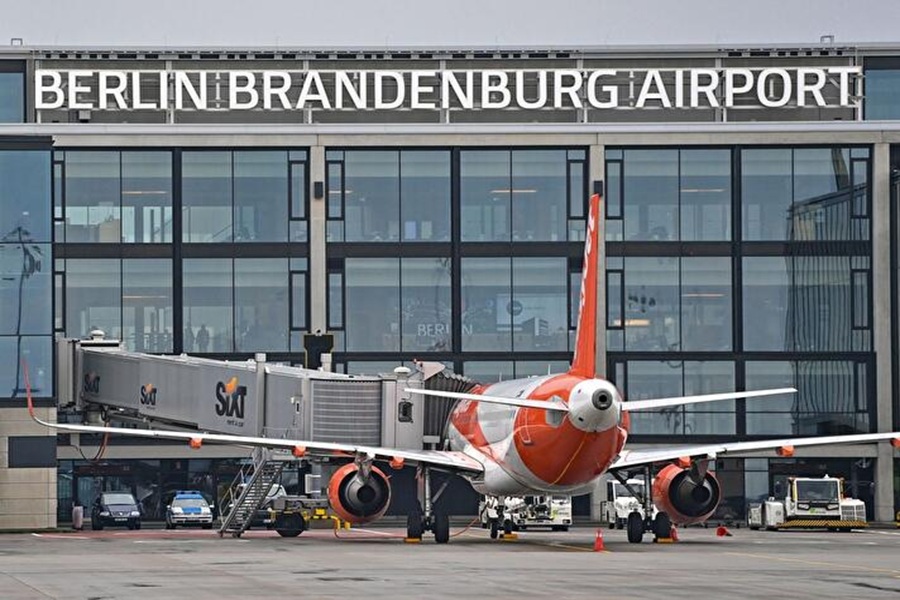
Vienna International Airport is a major hub, serving over 30 million passengers yearly. It’s got direct flights to many global destinations. The City Airport Train whisks travelers to the city center in just 16 minutes.
Berlin Brandenburg Airport opened in 2020, replacing the old Tegel and Schönefeld airports. It’s still growing its international connections. The airport express train takes about 30 minutes to reach central Berlin.
Both cities have good public transport. Vienna’s system is known for being super clean and punctual. Berlin’s network is more extensive, covering a larger area.
Vacation Rentals and Short Stays
Booking.com has lots of options in both cities. Vienna’s historic center, especially around Graben street, is pricey but atmospheric. You’ll find cheaper digs in districts like Leopoldstadt or Ottakring.
Berlin’s vast size means more varied choices. Trendy Mitte and Prenzlauer Berg are popular with tourists. For a local vibe, try Kreuzberg or Neukölln. Berlin tends to be cheaper overall for short-term rentals.
Both cities have cracked down on illegal Airbnbs. Always book through legit channels to avoid issues.
Tourism Impact on Cities
Vienna gets about 8 million tourists yearly. The city manages the flow well, but spots like Schönbrunn Palace can get crowded.
Berlin sees over 13 million visitors annually. The city’s larger size helps spread tourists out. But popular sites like the East Side Gallery can feel packed in peak season.
Both cities are working on sustainable tourism. Vienna’s been pushing eco-friendly hotels. Berlin’s focusing on promoting less-visited neighborhoods.
Family-friendly attractions abound in both. Vienna’s Prater amusement park is a hit with kids. Berlin’s got cool interactive museums like the DDR Museum.
Frequently Asked Questions
Vienna and Berlin are both amazing European cities, but they have some key differences. Let’s dive into the most common questions travelers have when comparing these two capitals.
How does the cost of living in Vienna compare to Berlin?
Vienna is a bit pricier than Berlin. Rent, food, and entertainment tend to cost more in the Austrian capital. Berlin offers better deals on apartments and eating out. You’ll get more bang for your buck in Germany’s largest city.
What are the key differences in lifestyle between living in Vienna and Berlin?
Vienna has a slower, more traditional vibe. People enjoy coffee houses and classical music. Berlin is edgier and more fast-paced. It’s known for its nightlife and creative scene. Berliners are often seen as more laid-back and alternative.
Which city has a more vibrant cultural scene, Vienna or Berlin?
Both cities shine culturally, but in different ways. Vienna excels in classical arts, opera, and museums. Berlin is a hotspot for modern art, street performances, and indie music. It really depends on what type of culture you’re after.
In terms of safety and quality of life, how do Berlin and Vienna differ?
Vienna often ranks higher for quality of life. It’s cleaner and feels safer, especially at night. Berlin has more crime, but it’s still considered safe for a big city. Both offer great public transport and green spaces.
Can you describe the differences in the Christmas markets of Vienna and Berlin?
Vienna’s markets are more traditional and elegant. You’ll find lots of classical music and fancy decorations. Berlin’s markets have a cooler, more diverse vibe. They often feature quirky crafts and international food stalls.
What should one consider when deciding between visiting Vienna or Berlin?
Consider what you want from your trip. If you love history and classical arts, Vienna might be your pick. For nightlife and a more alternative scene, Berlin could be the winner. Also consider your budget and travel style. Both cities are worth visiting!
